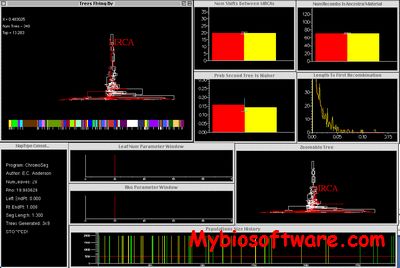RecMin
:: DESCRIPTION
RecMin is a software to identify ancestral recombination events from population genetic data.Under certain assumptions the pattern of diversity at a collection of linked sites provides information allowing us to detect historic recombination events. The program RecMin.c calculates a lower bound on the number of recombination events required to construct any history of a sample, under the assumption that each segregating site has mutated only once since the most recent common ancestor of the sample. Such a lower bound is appropriate, since many historical recombinations are typically undetectable. It gives a measure of what extent the sample history differs from a simple tree structure, and can show if there is regional clustering of the detectable recombinations.
::DEVELOPER
Simon Myers
:: SCREENSHOTS
N/A
:: REQUIREMENTS
:: DOWNLOAD
 RecMin for win ; for Unix ; Source Code
RecMin for win ; for Unix ; Source Code
:: MORE INFORMATION
Citation:
Myers, S. and Griffiths, R. C.,
Bounds on the Minimum Number of Recombination Events in a Sample History
Genetics 163(1):375-394, Jan. 2003


